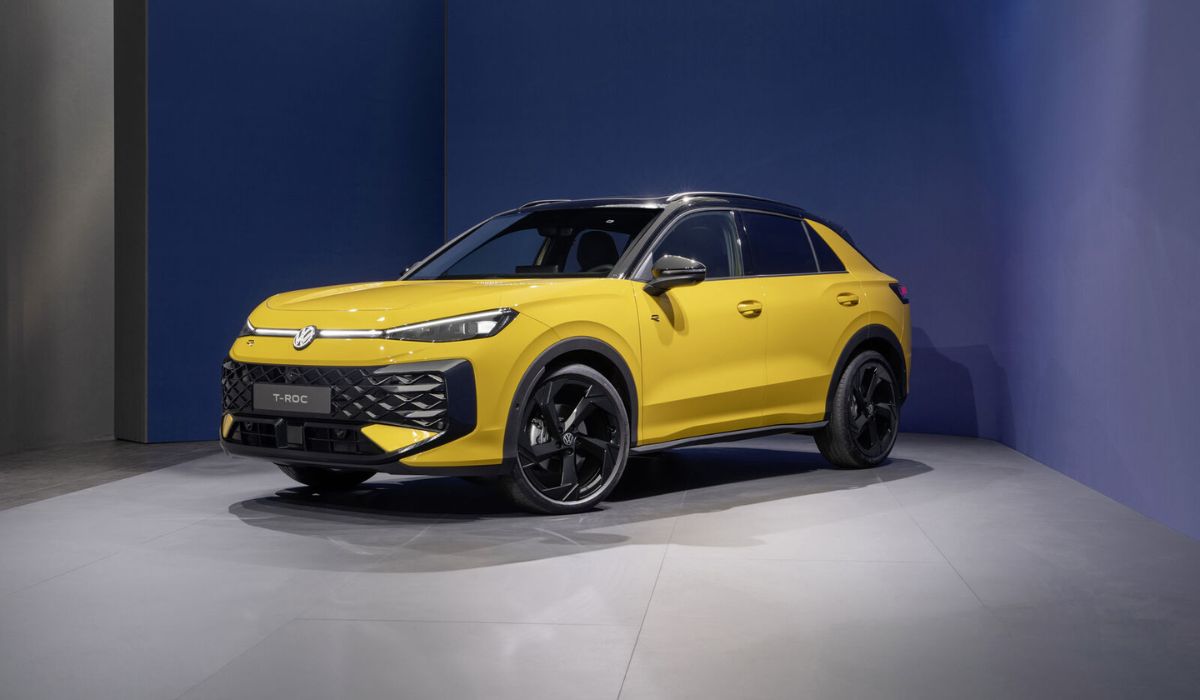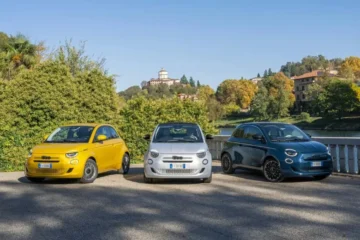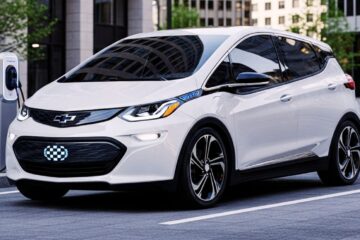The Lowdown:
- The new 2026 T-Roc introduces full-hybrid and 48V mild-hybrid options, up to 168 HP (125 kW).
- Interior redesigned with 12.9-inch touchscreen, ambient lounge-style lighting, and massaging ergoActive seats.
- Cargo capacity increased to 475 liters (16.8 cu ft), wheelbase stretched for more rear legroom.
- Advanced driver-assist systems include Travel Assist with automatic lane change, Park Assist Pro, and exit warning.
- 88 pounds (40 kg) of recycled plastics used in the cabin, making it VW’s most eco-conscious SUV interior yet.
- Drag coefficient improved by 10% to 0.29 cd.
- The column-mounted gear shifter replaces the bulky gear lever; six-speed manual gearbox dropped entirely.
- Front bumper R-logo placement and T-Roc R version launching early 2027 highlighted for enthusiasts.
Volkswagen’s compact SUV star, the 2026 T-Roc, has arrived in its second generation. VW says it was developed completely from scratch, taking everything that made the first one a hit and making it sharper, roomier, and more confident. Since 2017, the T-Roc has sold over two million units worldwide, demonstrating that a compact SUV can still make a lasting impression. The new model retains that cheeky, sporty feel but now features a more grown-up cabin that feels comfortable enough for daily drives while still evoking a sense of weekend escape.
Exterior: Bold, Modern, and Recognizably T-Roc
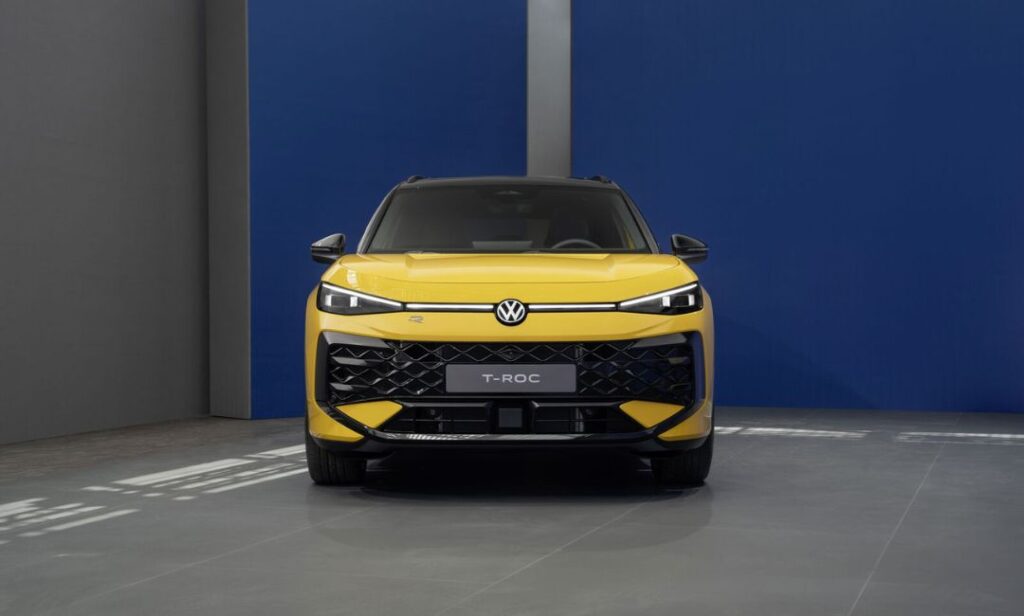
The 2026 Volkswagen T-Roc catches your eye immediately. It’s a compact SUV, but it has grown slightly—now 4,373 mm (172.1 in) long, with a wheelbase of 2,631 mm (103.5 in). You’ll notice the extra space in the back; passengers won’t feel cramped. Up front, VW borrowed hints from its electric lineup—there’s a full-width LED strip, a glowing VW badge, and optional IQ.LIGHT headlights that really stand out. At the rear, the LED strip continues, and yes, another illuminated badge ties it all together. Wheels go up to 20 inches if you want the car to look grounded.
Step up to the R-Line, and the SUV gets a little more attitude. Aggressive bumpers, a rear diffuser, and the Black Style package make it feel sportier even when it’s parked. That hockey-stick sideline? Still there. You know it’s a T-Roc before you even reach it. VW has also refined the shape, lowering drag by 10 percent to 0.29 cd, so good—it just feels right when you look at it.
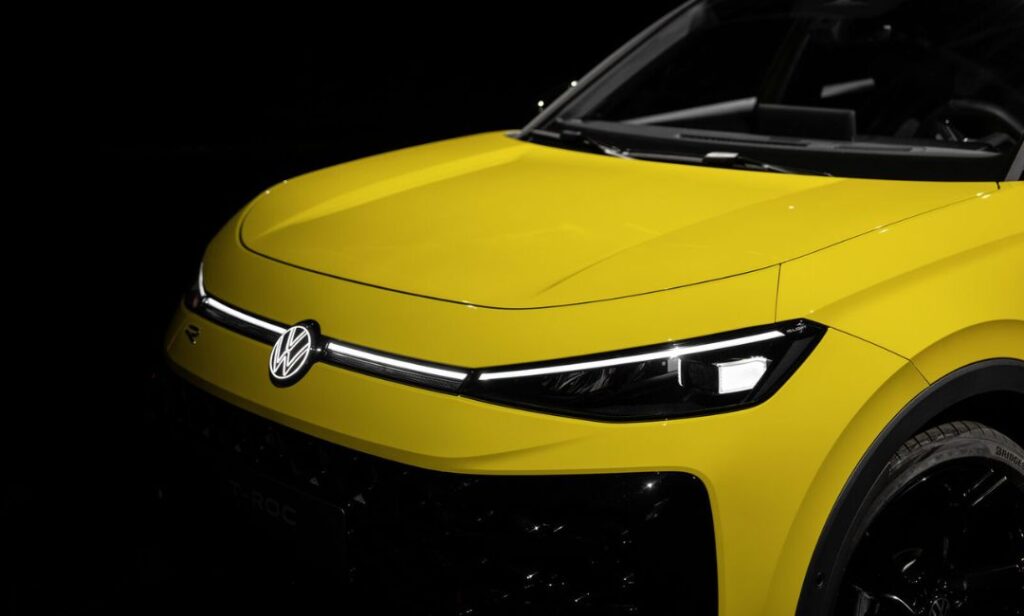
When you look at it as a whole, the T-Roc feels ready for almost anything. It has a presence in the city, yet it’s not intimidated by an open road. You can take it anywhere, and it just… fits.
Interior: Lounge-Like Comfort Meets Cutting-Edge Tech
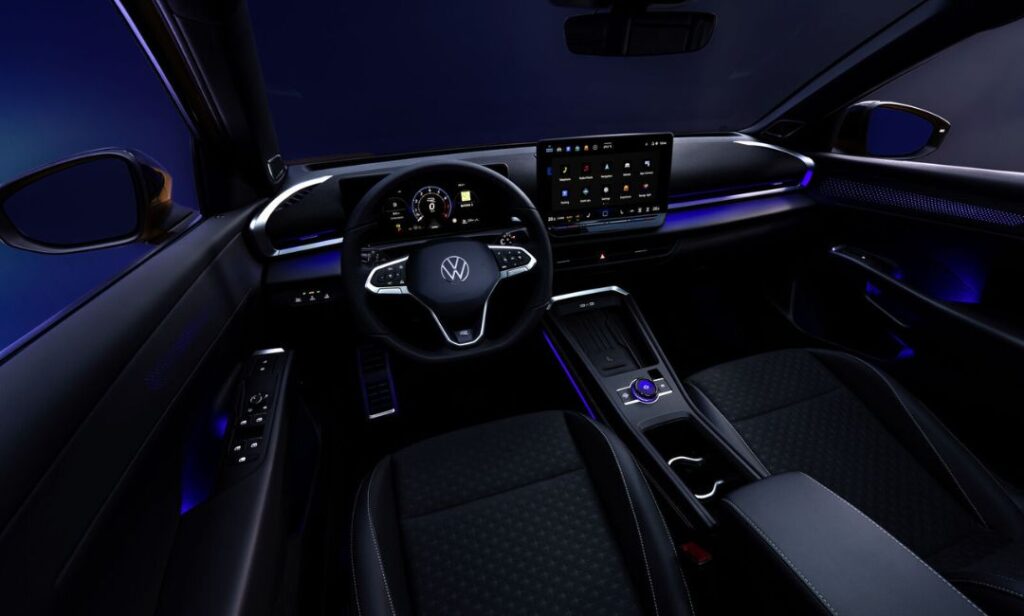
Step inside the 2026 T-Roc, and it feels like a tiny lounge on wheels. VW has gone all out here, with the dashboard now wrapped in a new fabric that works with ambient lighting shining through the perforated leatherette—honestly, it’s so good. You can really feel the Tiguan and Taron influence in the layout; the quality and attention to detail seem lifted from their bigger siblings.
The infotainment is hard to miss. A 10.4- or 12.9-inch touchscreen dominates the dash, backed by a 10-inch digital instrument cluster. You can even opt for the optional windscreen head-up display, which displays key information right where you need it—it’s that good. The touch sliders are still there, yes, but a physical multifunction knob sits between the seats to handle volume, drive modes, and ambient lighting, so you’re not stuck swiping all the time. Optional features include a Harman Kardon audio system and an ergoActive seat with 14-way electrical adjustments and a massaging function.
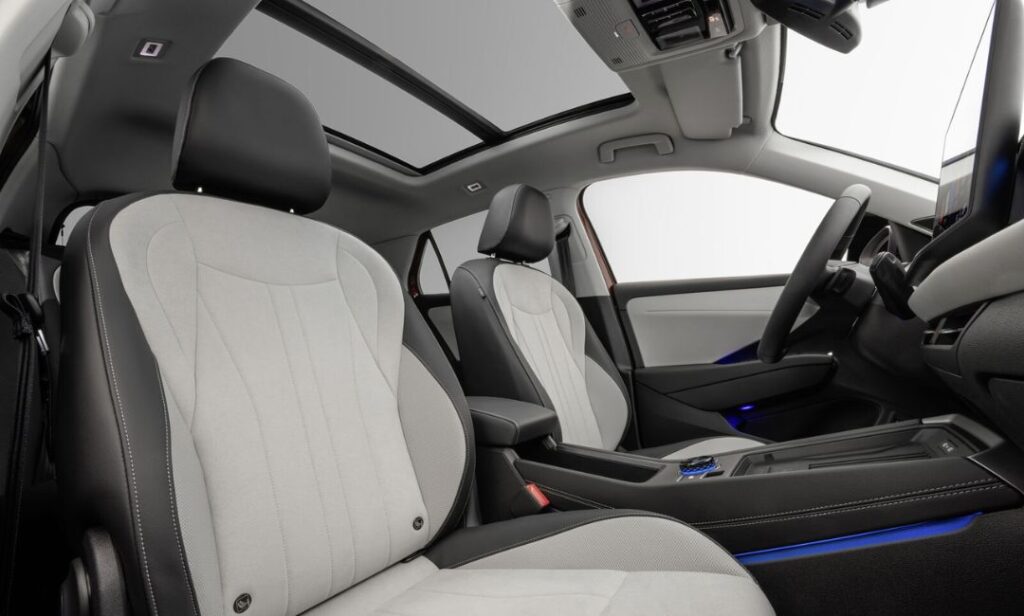
They’ve even thought about sustainability. About 20 percent of the interior plastics are recycled (88 pounds / 40 kg), making this T-Roc VW’s most eco-conscious SUV cabin yet. Small touches, big impact—you’ll feel it as soon as you slide in.
Powertrain and Performance: Mild-Hybrid Now, Full-Hybrid Soon
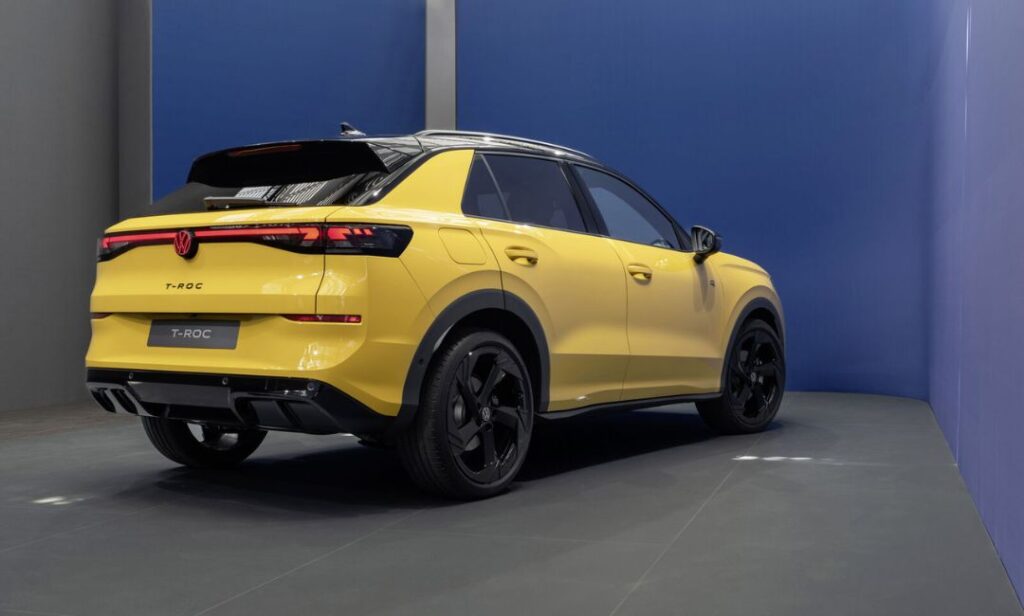
There are two 1.5-liter eTSI 48V mild-hybrid engines at launch. The base one makes 114 HP (85 kW / 116 PS) and 220 Nm. The stronger engine produces 148 HP (110 kW / 150 PS) and 250 Nm of torque. Both have a 7-speed DSG dual-clutch gearbox sending power to the front wheels. The gear lever is gone. VW uses a column-mounted shifter now. It feels a little different at first, but it works fine. The six-speed manual isn’t offered anymore.
Later, a full-hybrid version will be added to the lineup. It combines the 1.5-liter TSI evo2 engine with an electric module. Outputs are 134 HP (100 kW / 136 PS) and 168 HP (125 kW / 170 PS), with 306 Nm of torque. These are front-wheel drive only. All-wheel drive is available with the 2.0-liter TSI mild-hybrid engine and 4Motion. A performance-oriented T-Roc R, using the 2.0L EA888 turbo-four engine, is confirmed for early 2027.
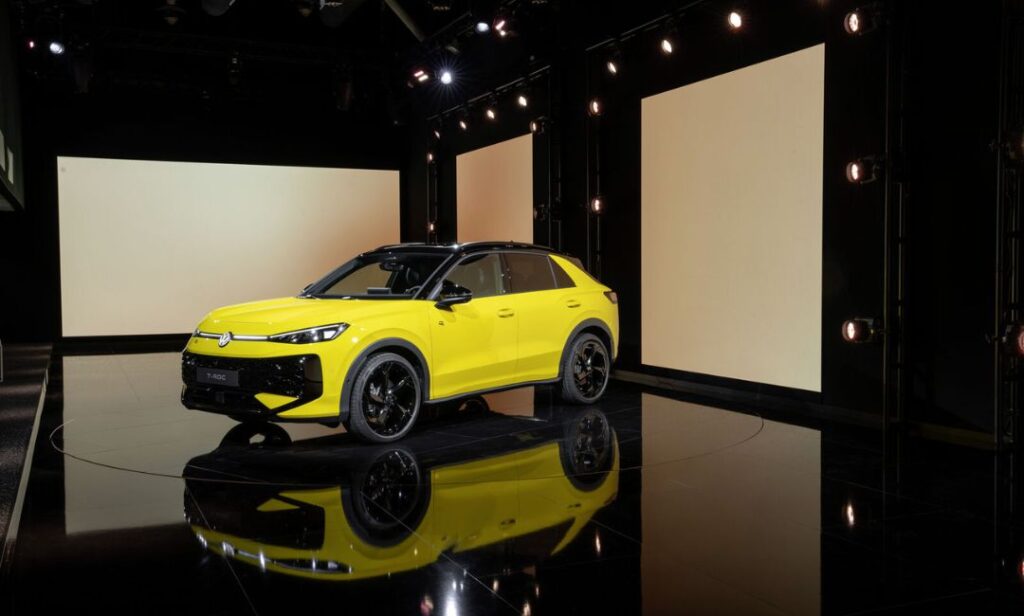
It rides on the MQB Evo platform, the same as Tiguan and Tayron, giving better hardware and smarter software. Travel Assist handles predictive speed control and automatic lane changes. An exit warning is included, and Park Assist Pro can park the car fully, up to 50 meters (164 feet). Overall, it feels grown-up, borrowing cues from larger SUVs while retaining its own character.
Trim Levels and Options
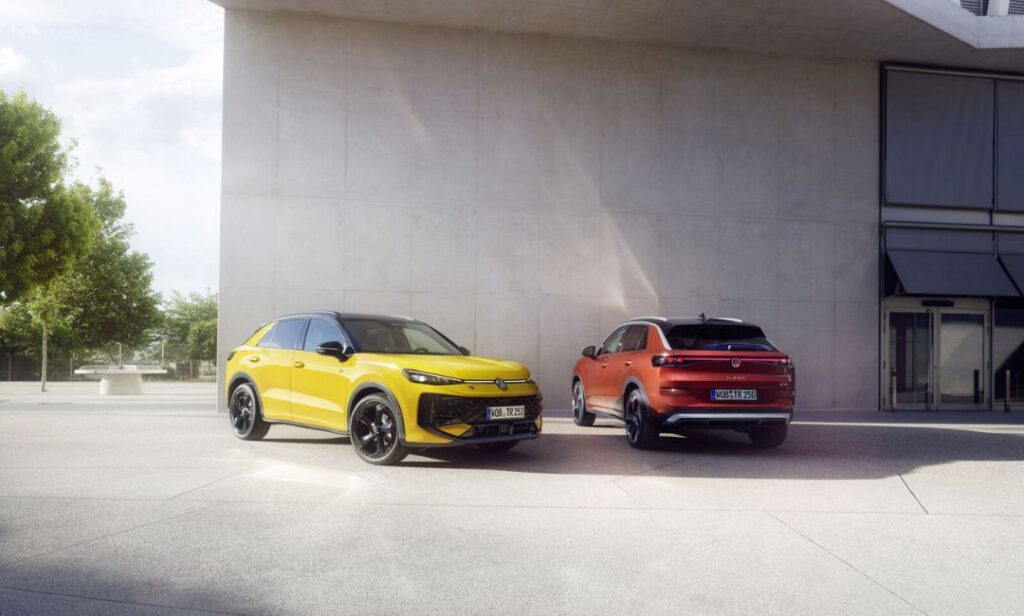
The lineup is now clearer and customer-focused, consisting of:
- Trend (base) – budget-friendly with essential features
- Life – added comfort and convenience
- Style – design and technology-focused
- R-Line – sporty styling and enhanced presence
Paint options include Pure White, Wolf Grey, Canary Yellow, Flamed Red, Celestial Blue, and Grenadilla Black, with a bi-color black roof available. A towing bracket capable of supporting heavy e-bikes (with an 80 kg drawbar load) is optional across all trims.
European-Only Star
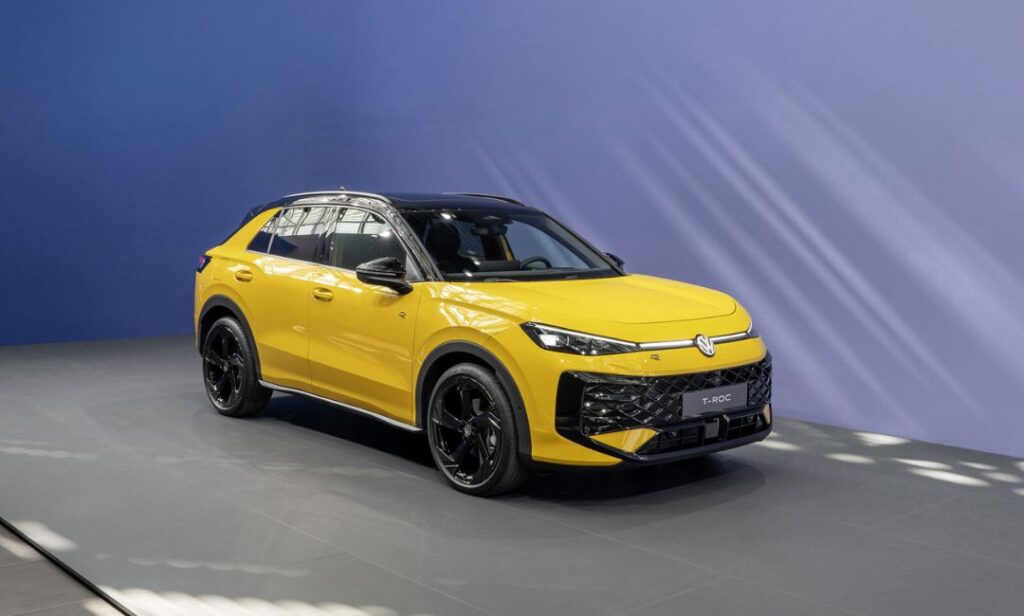
The 2026 T-Roc is specifically designed for European buyers. Pre-sales start on August 28 and deliveries are scheduled for November 2025. Pricing begins at €30,845 (around $33,900 USD) for the 1.5 eTSI (85 kW / 115 PS). VW confirmed it won’t come to North America, where the Taos remains the smallest SUV in the lineup.
Even without a U.S. launch, the T-Roc has done well in Europe. It outsold the Golf in the first seven months and is now VW’s second most popular SUV after the Tiguan. Hybrid engines, a spacious interior, high-quality materials, and driver-assist technology from larger models make it practical and a bit aspirational.
It’s one of Europe’s most versatile compact SUVs right now, and worth seeing in person if you’re in the market.
Source: Volkswagen
Read More:

